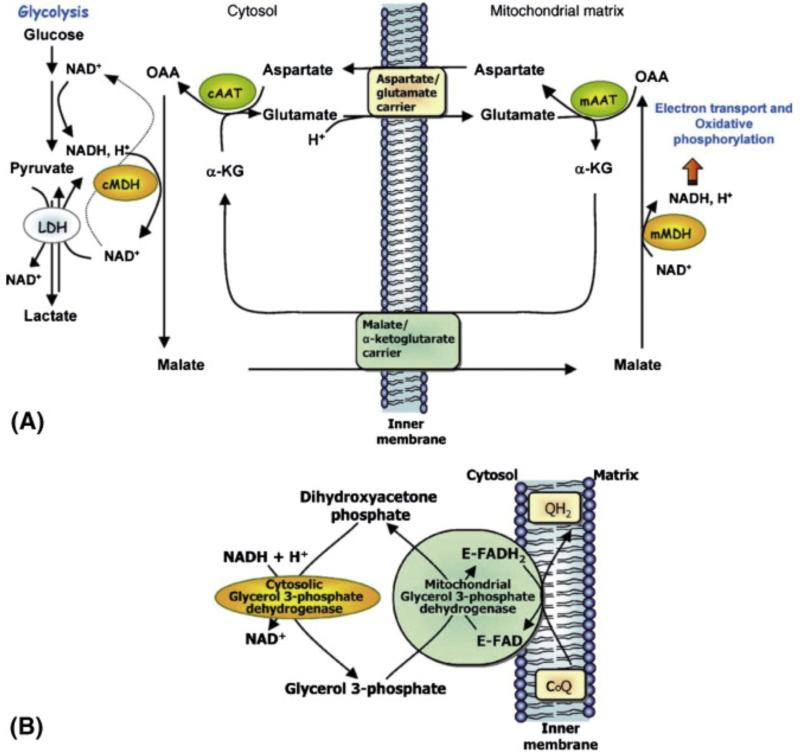Fig. 4.
Principal intracellular metabolite shuttles. A) The MAS for transferring reducing equivalents from the cytosol to the mitochondria. Electrons from glycolysis or from oxidation of lactate to Pyr are transferred from NADH, H+as OAA is converted to malate by cytosolic MDH (cMDH). Malate enters the mitochondrial matrix via the malate/α-ketoglutarate carrier in exchange for α-KG. Electrons are transferred to the electron-transport chain as malate is oxidized to OAA by mitochondrial MDH (mMDH). OAA is subsequently converted to aspartate by transamination with glutamate via mitochondrial AAT (mAAT). The aspartate exits the mitochondria via the aspartate/glutamate carrier (AGC1, aralar1) in an electrogenic exchange for glutamate and a proton. In the cytosol, aspartate is converted to OAA by transamination with α-KG via cytosolic AAT (cAAT) completing the shuttle. B) The glycerol 3-phosphate shuttle for transferring reducing equivalents from the cytosol to the mitochondria. Electrons are transferred from NADH when dihydroxyacetone phosphate is reduced to glycerol 3-phosphate. Glycerol 3-phosphate is reoxidized to dihydroxyacetone phosphate by mitochondrial glycerol 3-phosphate dehydrogenase that is bound to an FAD prosthetic group on the outer side of the inner mitochondrial membrane and electrons are transferred to CoQ and subsequently enter the electron transport chain. Less energy is produced when electrons transferred into the mitochondria via the glycerol 3-phosphate shuttle enter the electron transport chain since FAD is the acceptor rather than NAD. Adapted from drawings/legends of Figs. (1) and (2) in McKenna et al. (2006c).

